
Intro
When considering a new running shoe, there are so many similar-looking shoes on the market being made by so many different companies, it is virtually impossible to (1) know where to begin; (2) quickly figure out which one or two products from a given brand might work well for you; and (3) determine what products from other brands might be the most similar and also worth considering.
So in our new “Blister Brand Guide” series, we provide an overview of the entire product lineup of a brand; highlight how each product stands out from the rest of that brand’s lineup; and help you figure out quickly and easily which shoe might work best for you.
In our individual product reviews, we go very deep into the details of particular products. With these Brand Guides, the goal is not Depth, but Breadth. Our Brand Guides and full reviews are designed to complement each other — provide a broad overview of entire company lineups, and then also very detailed reviews of individual products.
The North Face: Brand Background
The North Face is a storied brand with a history inseparable from mountain sports. Founded in San Francisco by Doug Tompkins in 1968, the company spent its first few seasons selling predominately climbing equipment. As the years progressed, The North Face’s success widened its breadth, and the brand graduated from harnesses and ropes to backpacks, expedition tents, outerwear, and eventually their first line of run-specific apparel, “Flight Series,” which launched in 2006.
Though The North Face has made trail shoes for quite some time, they’ve been viewed by many as secondary to their performance apparel. Still, as a brand, The North Face has a reputation for producing paradigm-shifting pieces of gear, like their Ruthsack, which was one of the first internal frame backpacks, or their Oval InTENTion shelter, a tent that changed the way designers thought about A-shaped tents. As players in the trail space witnessed the sport’s emphatic rise over the last decade, it was only a matter of time until creatives at The North Face directed their inventiveness in the direction of running shoes.
In 2021, The North Face launched 3 new trail shoes to showcase their “VECTIV” technology, a patented platform uniting all of their disparate models. VECTIV is more of an approach to shoe design than a piece of hardware; it essentially consists of combining a performance plate made from either carbon fiber, Pebax, or TPU with a rockered midsole. This pairing was central to The North Face’s first 3 models, and each shoe — the VECVTIV Enduris, VECTIV Infinite, and VECTIV Flight — was then tuned for different types of trail running. A framework like this preserves similarities across their line while still offering specialization for things like distance, terrain, and speed.
In general though, North Face VECTIV shoes still keep a pretty narrow aperture in terms of their design. Heel stack heights range from 25 mm to 31 mm, lug depths hover around 3.5 mm (except waterproof versions of shoes, which use 5 mm lugs), and heel-to-toe drops settle in at 6 mm for most of their models. While every North Face shoe has a pronounced rocker geometry, it’s more subtle in models that use less rigid materials for their performance plates. Those models tend to have better ground feel, but offer less protection. The North Face VECTIV shoes also have a habit of running on the narrow side, similar to examples from some European brands like Salomon and La Sportiva.
The North Face’s VECTIV line is still relatively new. After only a couple of years in the game, the five principle models they currently have on offer boast an impressive amount of features, indicative of the brand’s recommitment to making high-performance footwear. In this breakdown, we’ll go through the design of each of The North Face’s shoes and speak to their intended purpose.
TRAIL SHOES
(Most Cushioned to Least Cushioned)
Most Cushion
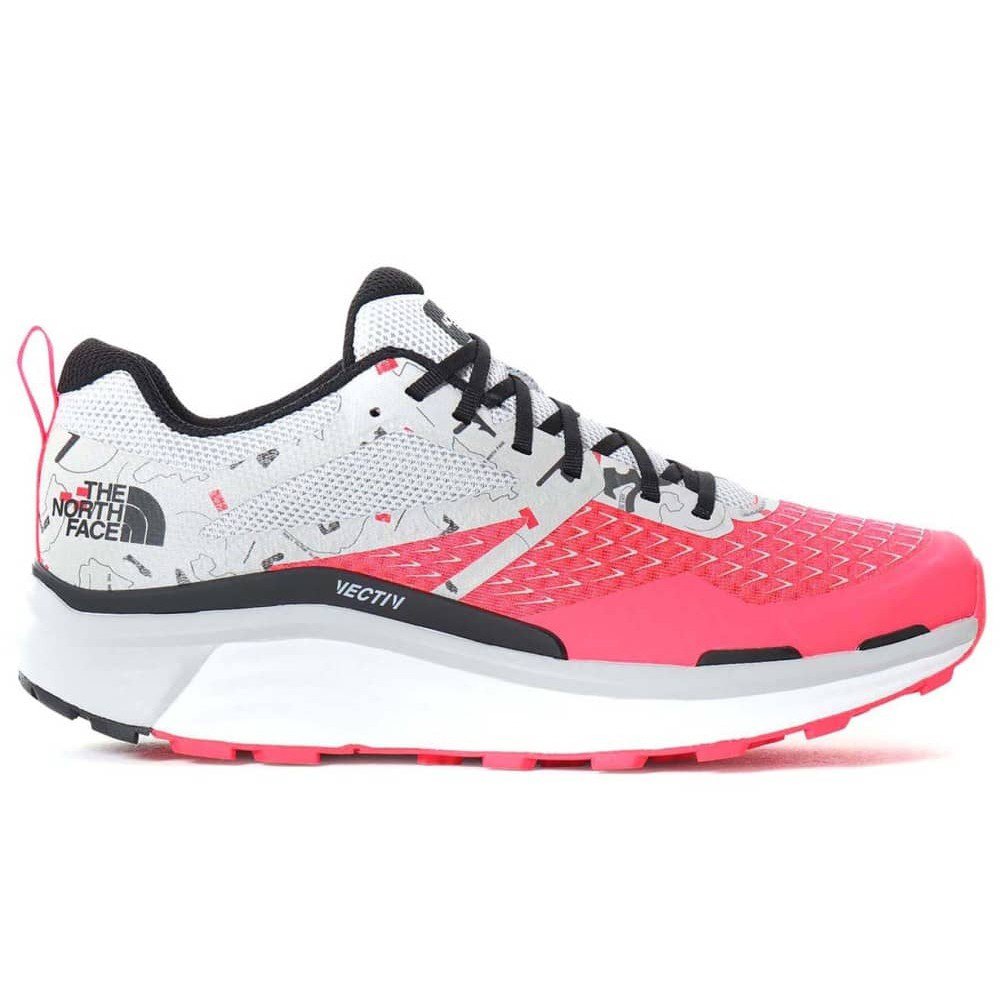
Stack Height
- Heel: 31 mm
- Toe: 25 mm
Drop: 6 mm
Stated Weight
- Men's: 309 g
- Women's: 265 g
MSRP: $139.00
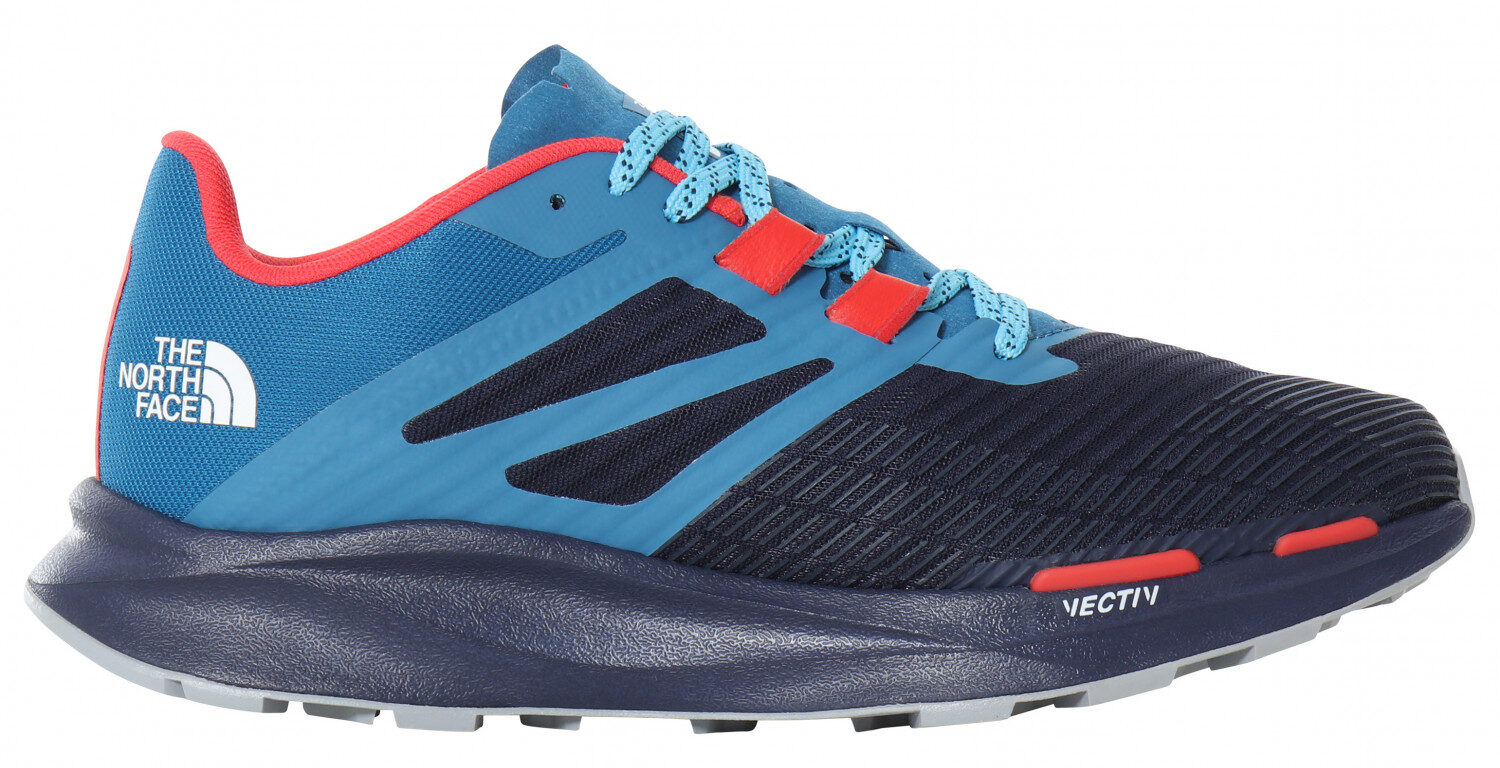
The VECTIV Eminus is a newer model from The North Face and resembled the VECTIV Enduris II in many ways. It shares the same 3D TPU plate, 6 mm heel-to-toe offset, “Surface Control” rubber outsole (with 3.5 mm lugs), and rockered geometry. Where the VECTIV Eminus differs is in its midsole material (single-density EVA foam) and its upper (TPU quarter-panel overlays applied to performance mesh). The VECTIV Eminus also has a slightly lower stack height than the VECTIV Enduris II and reduced padding on the tongue, so it likely won’t feel as plush. However, many would still consider 30 mm of stack firmly in maximalist shoe territory, so the VECTIV Eminus shouldn’t be thrown out as a long-distance option; it’s also a bit lighter than the VECTIV Enduris II, so it shouldn’t be dismissed as a shoe for faster workouts, either. If you’re looking for a pretty versatile model for anything from weekday runs on town trails to longer runs on non-technical terrain, the VECTIV Eminus is worth a look.
Stack Height
- Heel: 30 mm
- Toe: 24 mm
Drop: 6 mm
Stated Weight
- Men's: 297 g
- Women's: 255 g
MSRP: $ 129.00
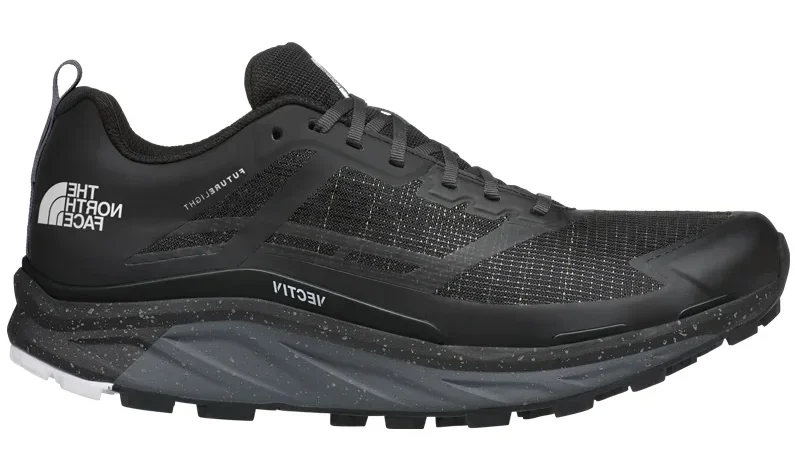
The North Face VECTIV Infinite FUTURELIGHT Reflect is a waterproof version of the standard VECTIV Infinite and is designed for inclement conditions. As such, the shoe’s upper has been lined with The North Face’s “Futurelight” membrane, reflective speckles have been added to the midsole for improved visibility, and the lugs have been lengthened from 3.5 mm to 5 mm. The VECTIV Infinite Futurelight Reflect is still a good option for technical trails and will likely perform better on looser terrain than the standard version of the shoe. That said, waterproofing might affect its breathability, so frequently wearing the VECTIV Infinite Futurelight Reflect in warm / dry conditions isn’t suggested.
Stack Height
- Heel: 27 mm
- Toe: 21 mm
Drop: 6 mm
Stated Weight
- Men's: 335 g
- Women's: 291 g
MSRP: $195.00
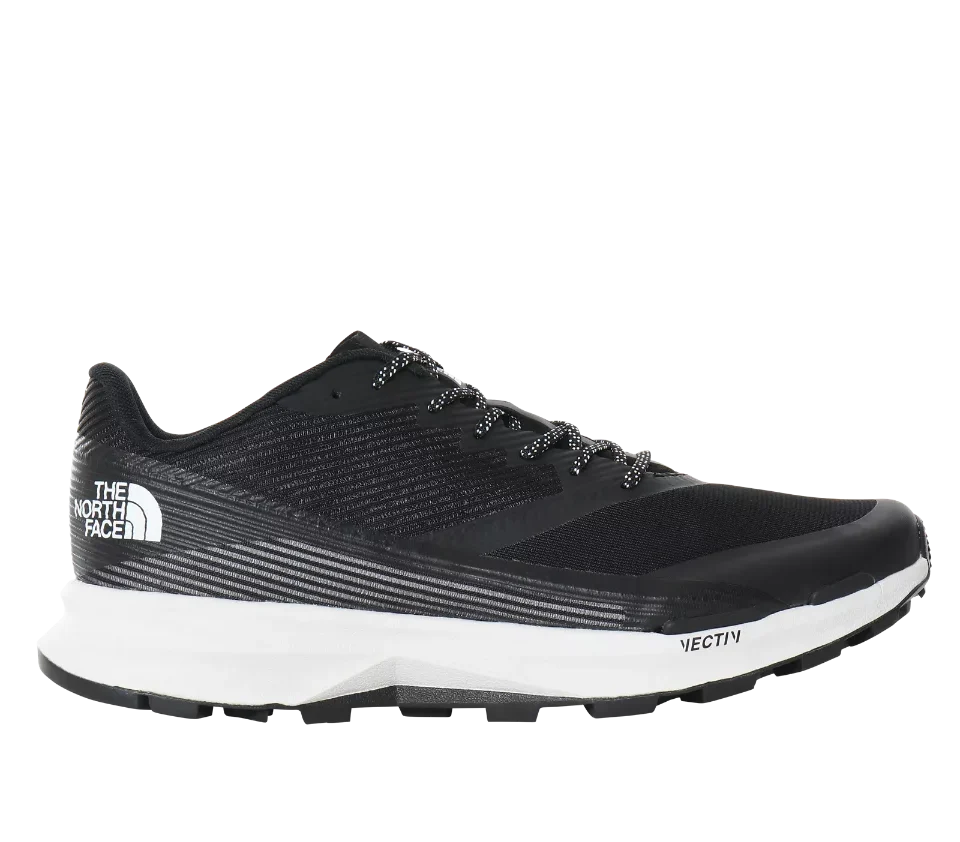
North Face’s VECTIV Levitum is a model designed for faster-paced runs on mild to moderately technical trails. The North Face applies their standard rocker geometry to the VECTIV Levitum’s midsole, which consists of a 3D TPU plate enveloped in single-density EVA foam. Ripstop material and no-sew TPU quarter harnesses round out the shoe’s upper, which should provide good foot security at higher intensities. While there is technically a plate underfoot, the 3D TPU that The North Face uses probably won’t be as resilient as traditional rock plates, and because the shoe has a lower stack height than the VECTIV Enduris II, it likely won’t be as protective. However, the VECTIV Levitum does have slightly longer lugs and a more flexible midsole, so its grip should be better than other models in The North Face’s line. This shoe could be a good choice for workouts (especially hill intervals) or shorter distance runs on most types of terrain.
Stack Height
- Heel: 26 mm
- Toe: 20 mm
Drop: 6 mm
Stated Weight
- Men's: 298 g
- Women's: 254 g
MSRP: $125.00
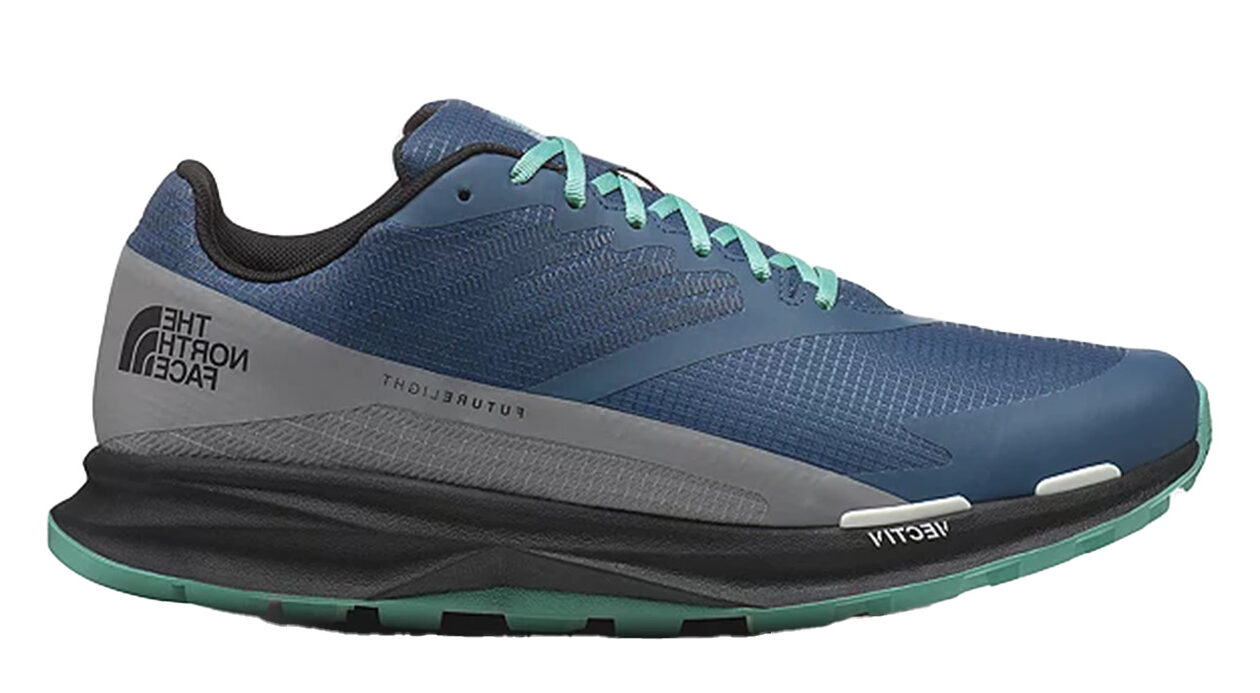
The North Face VECTIV Levitum FUTURELIGHT is a shoe built for speed in sloppy conditions. Like the waterproof version of the VECTIV Infinite, the Futurelight version of the Levitum features 5 mm lugs on an outsole made from “Surface Control” rubber and a “Futurelight” membrane, though in this example the membrane is organized in a bootie-like construction. Like with most waterproof shoes, breathability will likely suffer, but if you’re looking for an uptempo trail shoe for cold / wet conditions, the VECTIV Levitum Futurelight could be worth checking out.
Stack Height
- Heel: 26 mm
- Toe: 20 mm
Drop: 6 mm
Stated Weight
- Men's: 318 g
- Women's: 278 g
MSRP: $149.00
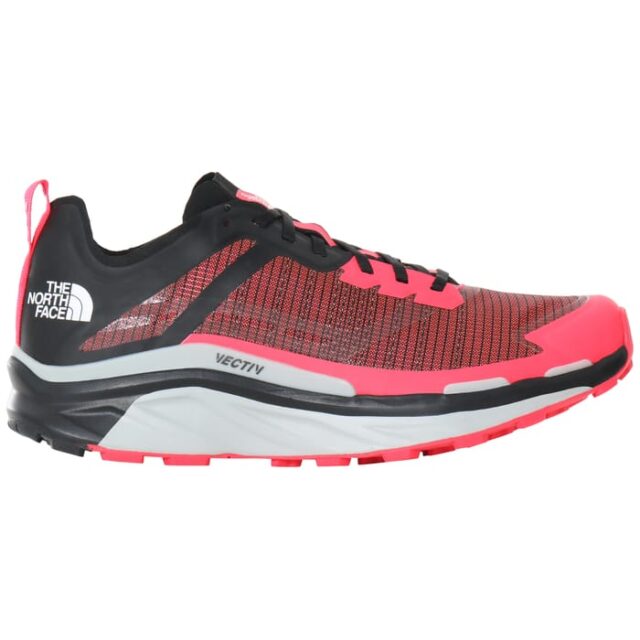
Stack Height
- Heel: 25 mm
- Toe: 19 mm
Drop: 6 mm
Stated Weight
- Men's: 307 g
- Women's: 273 g
MSRP: $169.00
Least Cushioned
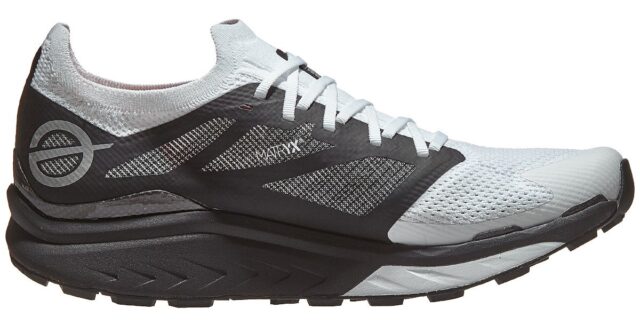
The North Face Flight VECTIV is the brand’s marquee performance shoe intended for higher-intensity running over medium-to-long distances. It was one of the first trail models to feature a 3D carbon-fiber plate underfoot, which The North Face sandwiched between dual-density high-rebound foam, together forming a rockered midsole focused on forward propulsion. The Flight VECTIV’s upper uses knit fabric above the toe box for breathability, along with a reinforced toe cap and “Matryx” panels on each side of the midfoot for durability, and a sock-like collar for a snug fit. The shoe’s outsole features 3.5 mm lugs made from The North Face’s “Surface Control” rubber, which should provide traction on tame to moderately technical trails. While the Flight VECTIV’s carbon plate might reduce its ground feel, it will also function as a rock plate, so the shoe should be more protective than some other stripped-down race day options. If you’re a fan of the VECTIV Infinite but want something a bit snappier and more performance-oriented, check out The North Face Flight VECTIV.
Stack Height
- Heel: 25 mm
- Toe: 19 mm
Drop: 6 mm
Stated Weight
- Men's: 285 g
- Womens: 245 g
